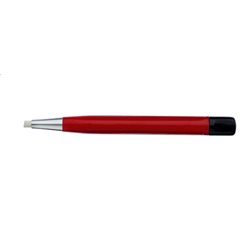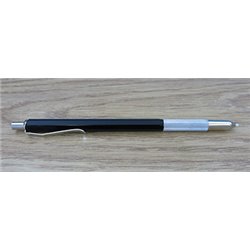There are a number of different options for attaching figures such as a horse and rider to a layout. Perhaps the...
No products
Product successfully added to your shopping cart
There are 0 items in your cart. There is 1 item in your cart.
Search Tips
Are there any safety considerations to bear in mind when using a glass fibre pencil?
A Glass Fibre Pencil is a very useful tool used which is ideally used for removing surface rust and for preparing a surface for painting. It can be used on a range of surfaces such as metal, wood, resin and plastic. It can also be useful in removing unwanted glue deposits from the assembly process. The pencil contains a core of glass fibres and like a propelling pencil, this core can be lengthened or shortened as required. A longer nib is less abrasive to the surface and can be used with gentle strokes to remove minor blemishes. A shorter nib is far more abrasive and can be used to remove more stubborn deposits.
The use of Glass Fibre Pencils comes with both advantages and disadvantages. The core of glass fibre is very tough allowing the pencil to be a powerful tool and as such, it can be used in tight or small spaces that would be difficult to reach with a regular sander and for which the use of a scalpel may not be appropriate. The flip side of the coin is that the fibres can be brittle and as such are likely to break off with regular use. The fibres are extremely small and sharp and can be difficult to see. If they embed themselves in the skin they can be extremely painful and uncomfortable and difficult to remove. Therefore, it is important to take suitable precautions when using these pencils. Some useful guidelines are listed below:-
Wear appropriate personal protective equipment (PPE): When using a glass fibre pencil, it's important to wear protective gloves, safety glasses, and a dust mask or respirator. The user's hands are closest to the pencil and are therefore at higher risk of injury. When fibres break off they can be propelled at speed and over some distance so it is very important to protect exposed skin surfaces and most especially the eyes, so it is vitally important to wear safety goggles. The fibres and associated dust can also remain in the air for some time so it is also highly advisable to wear a dust mask or respirator to avoid ingestion of filaments.
Use in a well-ventilated area: Because Glass fibre pencils can release dust and fibres into the air it is essential to use them in a well-ventilated area to avoid inhaling these particles. Use the pencil in an area with good air circulation, and consider using a fan or opening a window to help disperse any dust or fibres.
Keep the pencil away from the face and body: Avoid holding the pencil close to the face or body, as this can increase the risk of inhaling any particles that are released.
Dispose of used pencils safely: When the pencil is finished with, dispose of it in a sealed container or bag to prevent any fibres or dust from escaping.
Clean up thoroughly: After using a glass fibre pencil, be sure to clean up any dust or fibres that may have been released. Use a damp cloth or vacuum with a HEPA filter to avoid stirring up any dust, and dispose of any materials used in the clean-up process safely.
By following these safety tips, it is possible to minimise the risk of exposure to glass fibres or dust when using a glass fibre pencil and ensure a safe and healthy working environment.
Click here to receive the tips weekly in your mailbox. You can unsubscribe at any time.










